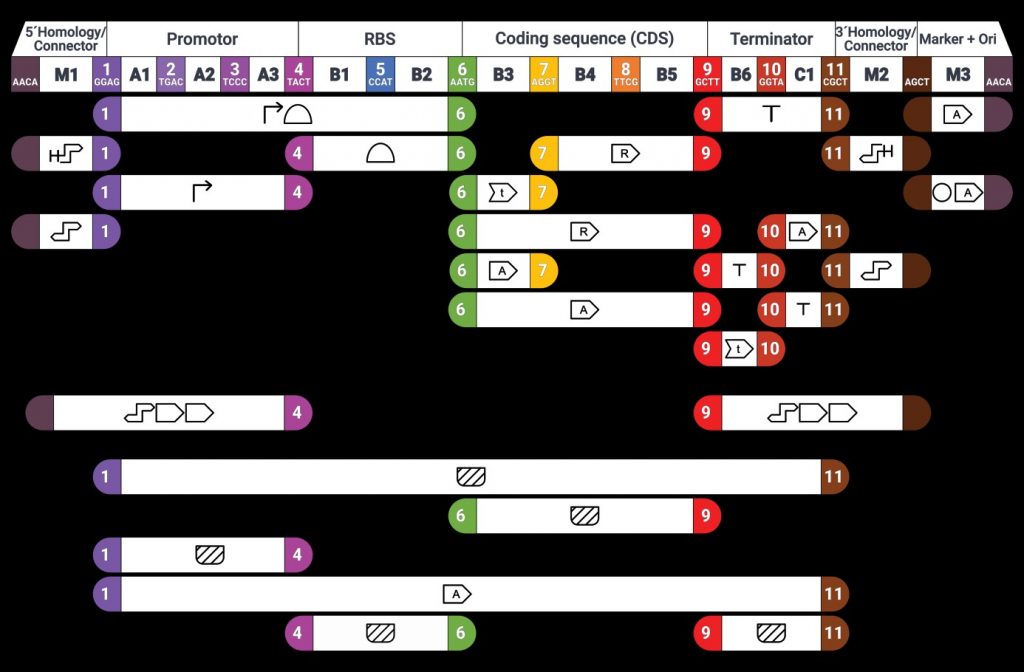The iGEM Foundation which is the organizer of the International Genetically Engineered Machine Competition is an independent, non-profit organization dedicating its work to the advancement of synthetic biology as well as education, competition, and the development of an open community and collaboration. The competition they organize is short called iGEM competition. And it gives students all over the world the opportunity to push the boundaries of synthetic biology by tackling everyday issues facing the world.
This year we contributed to the iGEM contest for the first time, providing free products to Team Marburg, so they could run their experiments! To help spreading the word about iGEM and the aim of the iGEM Competition to build a better world, we are sharing the project details from the iGEM Team Marburg. Keep on reading!
SynTEX – the photosynthetic platform of the future
In times of rising CO2 levels, steadily depleting oil resources and increasing energy demands, a paradigm shift in our petrobased chemical industry is direly needed. The development of an alternative energy source is not only ecologically sound; it also becomes more and more lucrative from an economical point of view. One of the most promising approaches is the production of chemicals using photosynthetic microorganisms in bioreactors. Such “green biotechnological” procedures compared to the traditional biotechnology have the advantage that you do not need to supply sucrose or cellulose. A large scale implementation would not require any agricultural products, meaning that food prices are unaffected. In 2004 the US Department of Energy (DoE) already published the “Top Value Added Chemicals from Biomass” a portfolio from platform chemicals, whose production in microorganisms is technically and economically considered to be feasible. These chemicals cover a wide array of applications from fuel to bioplastics and serve as a directive for biotechnological innovators.
While in the energy sector major financial grants led to the development and implementation of important key technologies in the field of renewable energies, the field of green biotechnology lacks this innovative strength. Reasons are in particular the cost- and time-intensive cultivation of phototrophic microorganisms and the poor genetic accessibility. This significantly complicates the development of new strains for industrial applications. A fast growing and genetically accessible organism could revolutionize the green biotechnology and catalyze future innovations. We, the iGEM Team Marburg set the goal to establish such a model in this year. Synechococcus elongatus UTEX 2973 is a cyanobacteria and the fastest growing phototrophic organisms in the world. With a doubling time of 2 hours it grows almost as fast as yeast, the most used organism in biotechnology. Since its re-isolation in 2014 (Yu et al. 2014: Synechococcus elongatus UTEX 2973, a fast growing cyanobacterial chassis for biosynthesis using light and CO2) the strain receives a lot of attention. Since 2016 a natural vector for transformation exists (Ungerer et al. 2016: Cpf1 Is A Versatile Tool for CRISPR Genome Editing Across Diverse Species of Cyanobacteria).
As the duration of molecular biological methods is determined by the doubling time of the model organisms, the use of faster growing organisms means that the same project can be finished in a fraction of the time. For this purpose we will develop a genetic toolbox this year, which simplifies and standardizes manipulations in UTEX 2973. “Parts” of this construction kit can then be exchanged worldwide, generating a flexible library that can be tailored to various applications. Besides, the toolbox enables the design of entire gene cascades in 2 – 3 days, streamlining and accelerating the process of cloning.

Figure 1: Design of the toolbox, termed the “Marburg Collection”. Genetic constructs consist of up to 7 “Parts” with different functions. Multiple constructs can merge with the help of a “Connector” Part. The cloning of these constructs happens in 1 – 2 simple Golden Gate reactions.
UTEX 2973 has the potential cause a paradigm shift in green biotechnology: just as the development of airplanes was only possible with the invention of the wind tunnel, by the help of which aerodynamic properties could be examined fast and cost efficiently, new metabolic pathways can be introduced and examined with UTEX 2973 and the development of new production strains for specific applications could be rationalized. To this purpose we establish a CRISPR-Cpf9 system, which streamlines genomic modification and use this to remove natural cyano toxines in our strain, making it suitable for pharmaceutical applications. By producing terpene, limone and farnesen we additionally show that the strain can easily be modified for biotechnological purposes.
